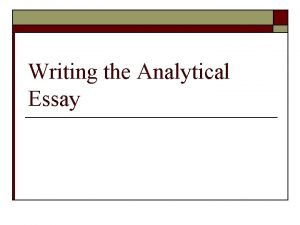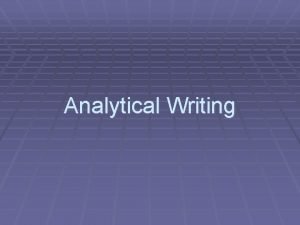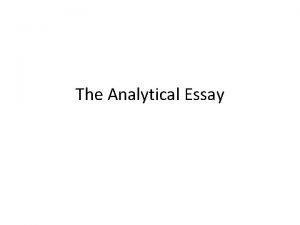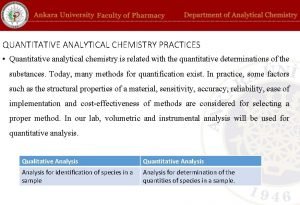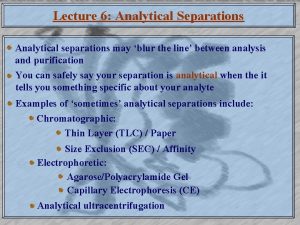Paper 2 How to approach paper 2 analytical








- Slides: 8

Paper 2 How to approach paper 2: analytical essay How is language used to create meaning? How do the historical and cultural contexts of the work contribute to our understanding of it? Are there different ways to interpret the work? What aspects of meaning do you bring to the text? Structuring your response

Focusing your response (B & D) Respond to the specific instruction within the title (not the quote/introduction) Respond to the title in every paragraph Refer explicitly to the title “Another way that justice is represented in. . . is. . . ” “. . . , thus demonstrating that more than one interpretation can, indeed, be made. ”

Analytical content (A, B & C) Analyse, don't describe Interpret meaning in terms of character/theme/context Use examples to back up analysis No descriptions of plot Link discussion to theme & context The question, whatever it is ostensibly about, always requires you to demonstrate your understanding of the works' themes and how context affects meaning

Context (A) In paper 2 it is particularly important to consider context. This can include The author's background and values The historical/political context The social/cultural context The impact of prevailing values and beliefs (both of the original context and of your context) The significance of the literary genre Your own background (gender, culture, values, belief systems)

Context (A) These are the kinds of questions you can ask How do the factors listed on the previous slide affect the work and how it can be read? What different interpretations is the work open to? How might the original audience have interpreted the text differently to modern readers? How might different groups (gender, ethnic groups etc) interpret the work differently? How might your own interpretation be influenced by your own context?

Examples (A & C) Examples can take many forms Direct quotes References to events from the work “When Marlene dismisses Angie's chances of success in life, she. . . ” “Jeanette's refusal to renounce her sexuality demonstrates that. . . ” References to specific stylistic devices

Structuring your response (D) 2 possible approaches: Text-by-text discussion Works ok with paper 2 Short transition paragraph, e. g. : “While Catcher in the Rye presents a protagonist who rejects his immediate society, Oranges Is Not the Only Fruit portrays a protagonist who is herself rejected by her immediate society. ” Point-by-point discussion Trickier, but potentially very effective

Conventions (D & E) Underline titles of works, every time Probably best not to abbreviate titles Introduce works early on, giving author's name and brief contextualisation No need for year of publication Quotation marks are only for quotations, not for: – demonstrating your lack of vocabulary – trying to sidestep stylistic conventions
 In analytical learning hypothesis fits
In analytical learning hypothesis fits What is an analytical expository essay
What is an analytical expository essay Approach approach conflict
Approach approach conflict Tony wagner's seven survival skills
Tony wagner's seven survival skills Datagram switching vs virtual circuit switching
Datagram switching vs virtual circuit switching Bandura's reciprocal determinism
Bandura's reciprocal determinism Theoretical models of counseling
Theoretical models of counseling What is a research
What is a research Waterfall approach marketing example
Waterfall approach marketing example

